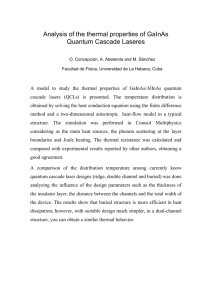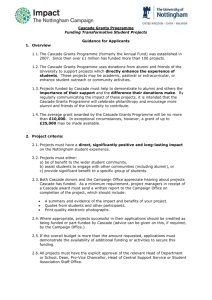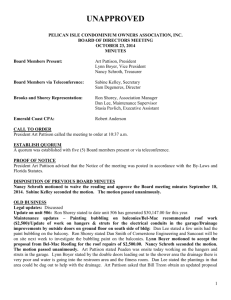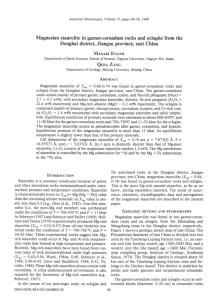Material properties and microstructure from
advertisement
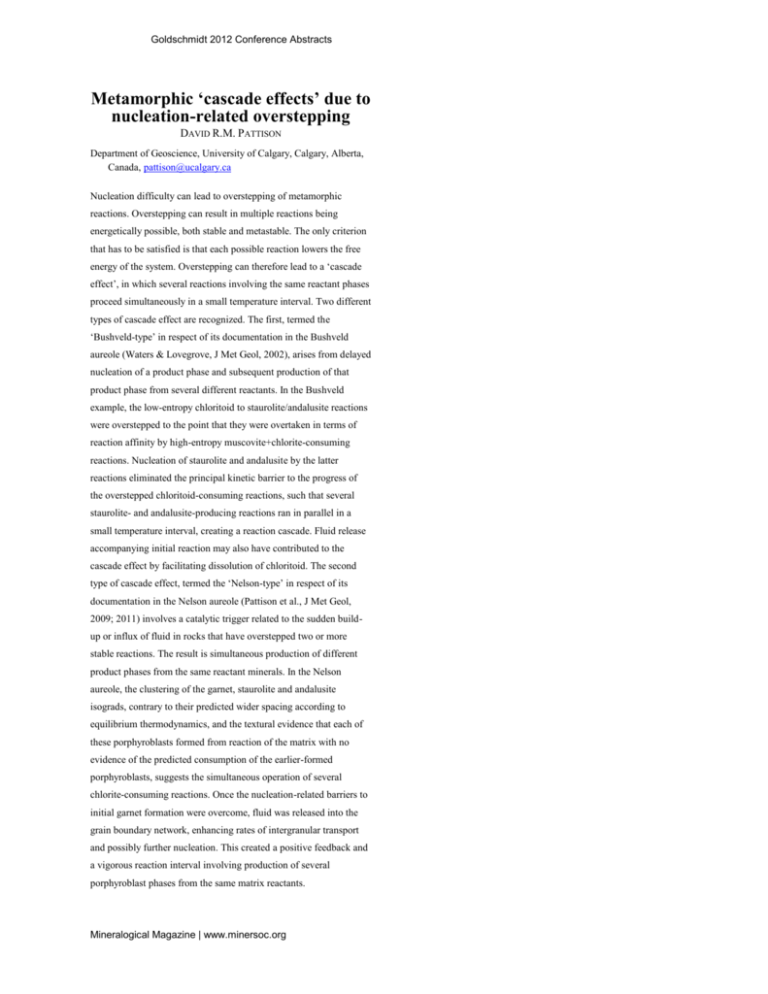
Goldschmidt 2012 Conference Abstracts Metamorphic ‘cascade effects’ due to nucleation-related overstepping DAVID R.M. PATTISON Department of Geoscience, University of Calgary, Calgary, Alberta, Canada, pattison@ucalgary.ca Nucleation difficulty can lead to overstepping of metamorphic reactions. Overstepping can result in multiple reactions being energetically possible, both stable and metastable. The only criterion that has to be satisfied is that each possible reaction lowers the free energy of the system. Overstepping can therefore lead to a ‘cascade effect’, in which several reactions involving the same reactant phases proceed simultaneously in a small temperature interval. Two different types of cascade effect are recognized. The first, termed the ‘Bushveld-type’ in respect of its documentation in the Bushveld aureole (Waters & Lovegrove, J Met Geol, 2002), arises from delayed nucleation of a product phase and subsequent production of that product phase from several different reactants. In the Bushveld example, the low-entropy chloritoid to staurolite/andalusite reactions were overstepped to the point that they were overtaken in terms of reaction affinity by high-entropy muscovite+chlorite-consuming reactions. Nucleation of staurolite and andalusite by the latter reactions eliminated the principal kinetic barrier to the progress of the overstepped chloritoid-consuming reactions, such that several staurolite- and andalusite-producing reactions ran in parallel in a small temperature interval, creating a reaction cascade. Fluid release accompanying initial reaction may also have contributed to the cascade effect by facilitating dissolution of chloritoid. The second type of cascade effect, termed the ‘Nelson-type’ in respect of its documentation in the Nelson aureole (Pattison et al., J Met Geol, 2009; 2011) involves a catalytic trigger related to the sudden buildup or influx of fluid in rocks that have overstepped two or more stable reactions. The result is simultaneous production of different product phases from the same reactant minerals. In the Nelson aureole, the clustering of the garnet, staurolite and andalusite isograds, contrary to their predicted wider spacing according to equilibrium thermodynamics, and the textural evidence that each of these porphyroblasts formed from reaction of the matrix with no evidence of the predicted consumption of the earlier-formed porphyroblasts, suggests the simultaneous operation of several chlorite-consuming reactions. Once the nucleation-related barriers to initial garnet formation were overcome, fluid was released into the grain boundary network, enhancing rates of intergranular transport and possibly further nucleation. This created a positive feedback and a vigorous reaction interval involving production of several porphyroblast phases from the same matrix reactants. Mineralogical Magazine | www.minersoc.org




